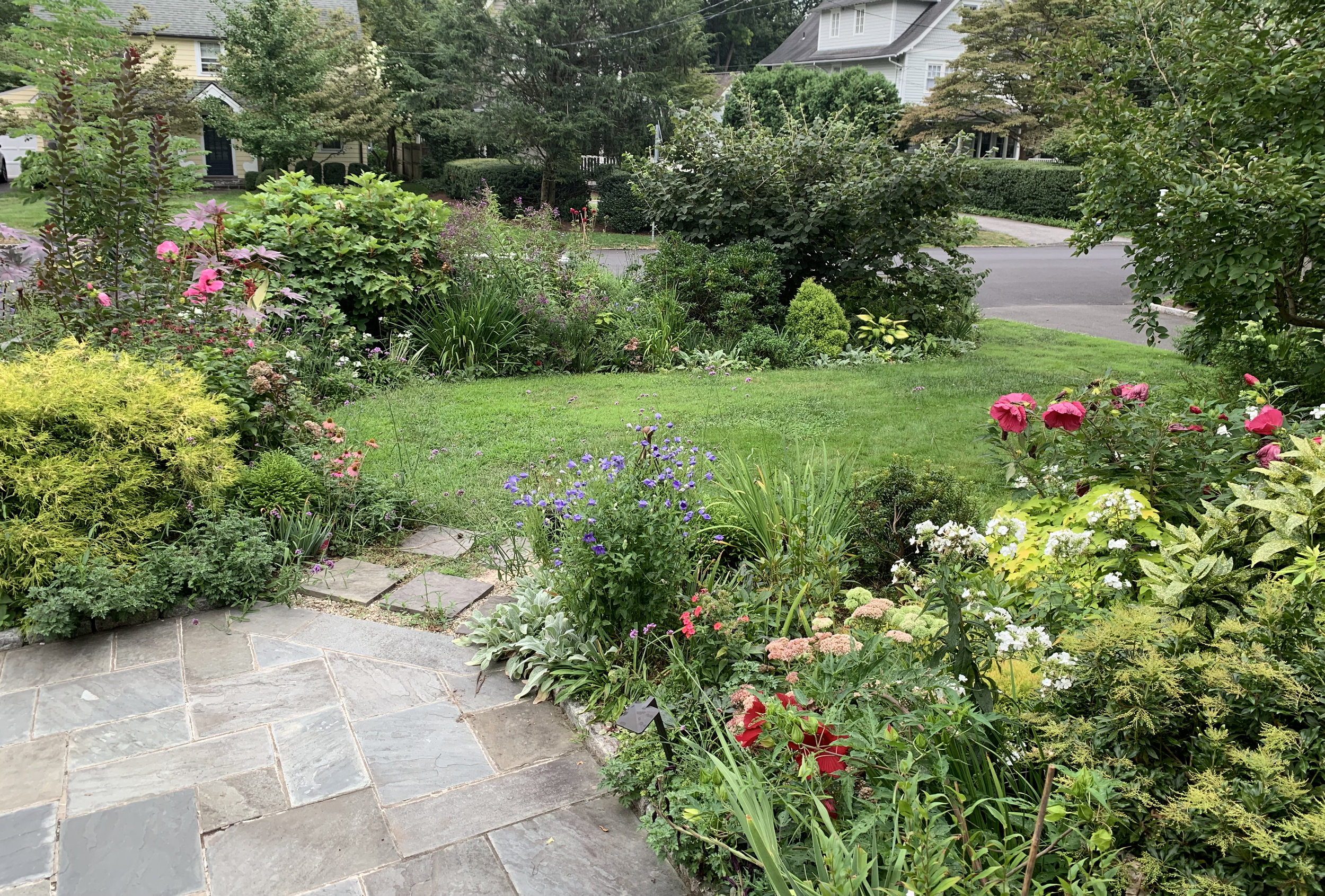Mulch - A Solution Looking for a Problem
I know that this is going to be controversial.
There are basically two types of mulch: decorative and top dressing. I am not going to discuss "inorganic mulch", which is supposedly a phrase used to describe landscape fabrics and other weed barriers. I have never seen these described as "mulch" anywhere except in "how to use mulch" articles.
Composted organic materials are often called mulch, but I prefer to call them top dressing. Top dressing is basically any organic material that you put on the soil for the main purpose of nourishing the plants or improving the soil. My favorite top dressing is composted leaf mold, but I also use commercial composted manure, and occasionally peat moss, vermiculite, and other things that are usually found in commercial potting soil. Depending on my energy level, I often try to dig it in, but a nice coat of top dressing really looks good. Often, it looks better than commercial mulch, which is a little sad because commercial mulch's only real purpose is to look good.
Commercial mulch does look good. Its consistent texture and color add an element of unity and tidiness. I have clay soil, which isn't very pretty when its compacted or dominated by the tree and shrub roots, so a few inches of mulch acts like a cream concealer for the garden.
When I first started gardening, I used millions of bags of pine bark. At first I used shredded pine bark, which looked good and it was easy to spread around. It stayed good looking for the entire summer, but I have several huge deciduous trees, and most of the mulch disappeared from a combination of decomposition and zealous leaf removal.
The next year I used mini nuggets, and this still looked good and most of it managed to stick around for another year or so, although I was always supplementing it. After a couple of seasons of mini nuggets, I switched to large nuggets. Twenty years later, I still find them in my sifted compost, but I stopped buying mulch altogether.
I had read everything about the wonders of mulch, but I came to the conclusion that it was not worth the considerable effort and expense (don't let the low price per bag fool you - it's expensive). My main motivation was that I didn't need it's cosmetic effect as much. My shrubs and perennials were growing in and covering the ground. The nuggets under the trees were always mixed with twigs and leaf litter, so it just didn't look that great. I also noticed that the benefits of mulch were oversold.
I found it to be useless in "conserving soil moisture." Most mulches are fibrous and loose, which works really well in soaking up moisture and maximizes the surface area, which allows it to evaporate quite efficiently. Parts of my garden had drip irrigation, and I could see the darker clumps of mulch that had soaked up the water and kept it near the surface so it could evaporate in the warm, windy air. I also noticed that many less-than-gentle rains would be entirely soaked up by the 3 inches of mulch and never reach the soil. Keeping mulch-free zones around my newly planted plants looked odd and was extra work. I also noticed it was strangling many perennials' crowns.
I was also unimpressed with its weed suppression. It can suppress weed seedlings, but these are among the easiest garden problems, and it also suppressed my favorite self-seeders (especially columbine). It was useless against aggressive weed roots. I also began to see the damage caused to trees by the "mulch volcanoes" that still afflict many trees.
Now I mostly notice misused mulch. I will talk about it in another post, but mulch should not touch tree or shrub bark and it should not crowd the crown of any perennial. Otherwise, mulch is not bad, it's just a lot of expensive work.
Most commercial mulch consists of bark or finely chopped stuff (usually wood or straw, which has enough composted manure or tannins to make it the right color). No one has a mulch farm - these are leftover products of agriculture (farms and trees) that are packaged up and sold to consumers. Adding mulch isn't bad, it just isn't necessary.



